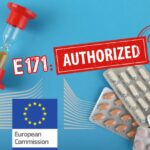
EpiNano: monitoring the health of workers exposed to nanos

EpiNano is an epidemiological monitoring system for workers potentially exposed to nanomaterials
By the AVICENN team – Last updated September 2022
Objectives
The EpiNano monitoring system was launched in early 2014 to build and then monitor a cohort of workers producing or handling nanomaterials for epidemiological surveillance purposes. It enables:
- the general monitoring of possible medium- and long-term health effects of occupational exposure to nanomaterials
- the implementation of ad hoc studies exploring specific research hypotheses.
A pioneering and unique system
The EpiNano program is unique in two ways:
- First, because it is the only occupational health monitoring system dedicated exclusively to nanomaterials (other systems exist in France, such as the SUMER survey, the “Programme de surveillance des Maladies à caractère professionnel” (MCP) or the consultations régionales de pathologie professionnelle et environnementale (CRPPE), the “réseau national de vigilance et de prévention des pathologies professionnelles” [national network for the monitoring and prevention of occupational pathologies] (RNV3P), … but they are not specifically focused on nanos).
- Then, because no other country has (to date) implemented such an epidemiological monitoring system related to occupational exposure to nanos.
EpiNano is thus the first system of this scale to be implemented1A “Nanoparticle Survey” had indeed been set up in 2011-2012 by CISME but its scope was very limited. Cf. “Repérage des salariés potentiellement exposés aux nanoparticules”, Jacquet F in Références en santé au travail, INRS, n° 132, December 2012, pp. 33-38. Other countries and institutions abroad have recommended to set up a follow-up of exposed workers, so the EpiNano program could possibly be replicated elsewhere soon. The use of similar tools for the European harmonization of surveillance methods for workers exposed to nanomaterials was discussed as early as 20132Source: Epidemiological surveillance of workers potentially exposed to intentionally produced nanomaterials in France: EpiNano device, Archives des maladies professionnelles et de l’environnement, December 2013. It is not known what stage they have reached today.
From the initial idea to its launch in 2014
Back in 2006, a report by the Prevention and Precaution Committee (CPP) emphasized that “epidemiological studies on exposed populations, particularly in the workplace, must be undertaken”3Cf. Nanotechnologies, nanoparticles: what dangers? What are the risks?Prevention and Precaution Committee (CPP), Ministry of Ecology, May 2006.
A working group comprising epidemiologists, toxicologists, occupational physicians, physical chemists and players in the prevention system4Working group for the implementation of an epidemiological follow-up of workers exposed to nanomaterials and “Risques pour la santé des nanotechnologies” (Health risks of nanotechnologies) for the national public debate on nanotechnologies of 2009-2010, IReSP was brought together by the “Institut de recherche en santé publique” (IReSP) in 2007 to work on this issue.
In 2008, Afsset (now ANSES) wrote that in view of the “specific epidemiological studies of potentially exposed workers, it is essential to implement a system for identifying personnel working in contact with nanomaterials and for monitoring working conditions“5Cf. Les nanomatériaux, Sécurité au travail, Afsset, May 2008.
In response to a request from the Ministries of Health and Labor, the “Institut national de veille sanitaire” (lnVS), which in 2016 became Public Health France, conducted a feasibility study published in 20116See Elements of feasibility for an epidemiological surveillance system for workers exposed to intentionally produced nanomaterials, Institut national de veille sanitaire (InVS), March 2011 on the epidemiological follow-up of workers and researchers exposed to nanomaterials. Two lines of study were proposed: the study of a prospective cohort and repeated cross-sectional surveys.
The EpiNano monitoring protocol has since been deployed by Santé publique France (which has taken over the missions of INVS since 2016).
It entered its operational phase at the beginning of 2014, after receiving a favorable opinion from the Advisory Committee on Information Processing in Health Research (CCTIRS) and the CNIL who both reviewed it in early 2013.
Program management and partners
Santé publique France is responsible for managing the system.
Other partners are involved:
- ANSES manages the mandatory declarations of nanomaterials in r-nano in France
- the General Directorate of Labor (DGT) of the Ministry of Labor, with which an agreement was signed in 2014, and the regional occupational health inspection (via the DREETS) are responsible for promoting the system to companies
- INRS, CEA, INERIS assess the exposure to nanomaterials and aerosol metrology at workstations.
A three-step protocol
The protocol was designed to be pragmatic and scalable. For its launch, EpiNano was phased in three steps:
- 1) inclusion of companies working in the field of manufactured nanomaterials (through a questionnaire sent to companies identified from the r-nano register)
- 2) within these companies, identification of positions potentially exposed to nanomaterials and semi-quantitative characterization of exposure (by means of company observation visits)
- 3) inclusion of employees assigned or involved in these positions (through a questionnaire sent to employees) and their medical follow-up in a prospective cohort, via a questionnaire sent every three years.
Workers identified as potentially exposed are included in a register constituting a prospective cohort with epidemiological follow-up.
The health monitoring is oriented on respiratory and cardiovascular effects, but keeps a global view.
The cohort can also be used for ad hoc studies exploring specific research hypotheses.
A program initially focused on carbon nanotubes and nano-titanium dioxide…
Initially, EpiNano was limited to two families of nanomaterials: titanium dioxide nanoparticles and carbon nanotubes, in powder form. Their risks are indeed beginning to be well documented7See our files:
–Risks associated with carbon nanotubes, veillenanos.fr
-Risks associated with nano titanium dioxide, veillenanos.fr and are often compared to those of asbestos.
However, the possible extension to other nanomaterials was part of the original EpiNano plan.
In 2014, data reported in r-nano relating to carbon nanotubes and titanium nano-dioxide were reported to lnVS for the Epinano project.
… then extended to silica nanoparticles and carbon black
The program was extended to silica nanoparticles in January 20168(information obtained in March 2017, during the ANSES nano dialogue committee) and then to carbon black9(at what date?).
This list may still evolve according to the national scientific and industrial context.
The main steps today
- 1) Agreement of the company in conjunction with the occupational physician.
- 2) Identification of the exposed positions by the competent persons of the company and transmission of the necessary industrial hygiene (IH) data to Santé publique France.
- 3) Transmission by the company of the list of workers eligible for inclusion in EpiNano, in a secure manner after having informed the workers.
- 4) Letter sent by Santé publique France to the worker’s home including an inclusion questionnaire, a refusal form and an information notice.
- 5) Analysis by Santé publique France of the workers’ data collected from the questionnaire. The data will be supplemented by health and cause-of-death data available from the National System of health data (SNDS) in particular. The career history will be reconstructed by extracting data from the CNAV.
Implementation difficulties
The exploitation of the data declared in the r-nano register is very difficult: the data are fragmentary, their analysis is complicated and the identification of the sites where the declared nanomaterials are handled was not easy at the beginning of the project.
In addition, very few companies have agreed to open their doors and those that do, do not necessarily follow through.
– from 2014 to 2016
By mid-201610Cf. Guseva Canu I et al (InVS), Epidemiological surveillance device for workers potentially exposed to manufactured nanomaterials in France, EpiNano: assessment after two years of operation, 34th National Congress of Occupational Medicine and Health, Archives of Occupational and Environmental Diseases, 77(3): 521-522, June 2016, of the 156 companies contacted, only 22 agreed to participate in the program and were visited by the InVS EpiNano team. Of the 149 positions using nano-objects observed by the team, approximately half were classified as potentially “exposing”. This work allowed the identification of 158 people eligible for EpiNano, a third of whom entered the system by completing the inclusion questionnaire.
By the beginning of October 201611Figures provided by Kathleen Chami (Santé Publique France / InVS) at the J3P Nanomaterials Day in Nancy on October 13, 2016, the number of volunteer companies had increased to 29, of which 27 were visited, with 153 jobs observed and 155 eligible workers identified but only 63 agreed to be part of the follow-up with a double questionnaire (active and passive) for cross-referencing with other databases (SNIIRAM, PMSI, CepiDC).
The occupational physician was involved in the project in 11 companies, by participating in the project presentation meeting and/or visits. In four companies, the physician acted as a resource person for the project. Some physicians declined to participate due to lack of time and/or the non-priority of nanos compared to other occupational risks.
In 2016 and 2017, new procedures were developed with the Occupational Medical Inspectorate to facilitate the identification of companies producing or using nanomaterials and to improve the identification of exposed positions. After this, the occupational physician and his team were put at the center of this health monitoring system, representing the cohort to the management, with the support of the occupational health inspectors and of Santé publique France12Cf. EpiNano: national system of
epidemiological surveillance of workers exposed to manufactured nanomaterials – The central role of the occupational physician, Renaudie N et al, Références en Santé au travail, n°152, December 2017.
The first version of the individual inclusion self-questionnaire was 27 pages long… It is now down to 15, hopefully encouraging a better response rate from workers.
– from 2017 to 2020
Communication efforts have been made and communication tools (leaflet, poster, slide show) have been designed, in conjunction with the DGT’s occupational medical inspection. A promotion plan was conducted as early as 201713Cf. EpiNano gets a makeover, Renaudie N et al, Archives of Occupational and Environmental Diseases, 79(4), 574, September 2018.
In December 2017, Santé publique France issued a call for applications to form a Scientific Advisory Board for the EpiNano program.
A progress report after 3 years of operation (2017-2020) was initiated with the objectives of assessing the state of the recruitment of companies and workers, and, also, to identify areas of improvement in order to optimize the recruitment methods.
The number of participating companies remained quite modest in 2021 (< 20) and less than 400 workers were registered in the system. This jeopardizes the ability of the program to meet its objective of prospective monitoring, while significant tonnages of products are used, produced and imported each year in France.
In an article published at the end of 202114Cf. “Surveiller sans savoir“, Jean-Noël Jouzel and Jérôme Pélisse, Revue d’anthropologie des connaissances, December 2021 in the “Revue d’anthropologie des connaissances”, two sociologists attached to the Centre de Sociologie des Organisations (CNRS, Sciences Po), shed light on the, until then unexplained, difficulties encountered in the implementation of EpiNano: these were due to the institutional and organizational tensions and the dynamics of competition between Santé Publique France (which primarily pursues research objectives) and the Occupational Medical Inspectorate of the Direction Générale du Travail (DGT), more concerned with the monitoring of occupational risks carried out in the field by the Regional Occupational Medical Inspectors (Mirt).
– from 2021 to 2022
When questioned by AVICENN, Santé publique France indicated at the end of November that, in view of the small number of participating companies and registered workers, it had been decided to have a pilot survey conducted by Ipsos under a public contract to recruit companies and monitor the data collection process (Santé publique France remaining the sole recipient of the data and the survey methodology remaining unchanged). The results were expected during 2022.
The French High Council for Public Health (HCSP), in its evaluation of PNSE 1, 2 and 3 published in 202215Cf. Global evaluation of the National Health and Environment Plans (2004-2019), HCSP, March 2022 also listed the reluctance of companies to join EpiNano:
- “A potential fear from the companies’ point of view of being held criminally liable in the event that the program shows a link between exposure and health effects.
- Lack of time and resources to complete the exposure questionnaire.
- Sometimes there is just unwillingness: even though the occupational physician is willing to participate, the HSE referent is opposed to the study, which blocks its deployment.
- Another difficulty is related to R-Nano. SpF is one of a limited number of stakeholders who can access the data in the register. Currently, a provider selected to do the recruitment and follow-up cannot access information about the company, even though this data is not confidential. It is not possible to transmit the list of companies to contact“.
How to contribute to its success?
All companies working in the field of production, transformation or use of nanomaterials in France are invited to contact the project manager: Kathleen Chami from Santé publique France.
When will there be an automatic connection between r-nano and EpiNano?
In the absence of new “voluntary” recruits, AVICENN pleads to make the registration of companies in EpiNano automatic as soon as they fill in an r-nano declaration for the nanomaterials concerned (currently, carbon nanotubes, titanium dioxide nanoparticles, silica nanoparticles and/or carbon black).
The High Council of Public Health (HCSP) also recommends “the removal of the difficulties” to which EpiNano is confronted via “texts, and a decree or a circular”16Cf. above..
Due to the low number of volunteer companies, delays due to governance and project implementation problems, the smooth running of the program was at least temporarily compromised. The challenge today is not only to keep the existing participants but to integrate more so that the system can achieve its objectives.
To be followed upon…
- “Nanos, glyphosate, have we really learned the lessons of asbestos?”, 25 years of asbestos: the scandal continues, InfoDiag, Hors-Série, September 2022
- Manufactured nanomaterials in the occupational environment: an overview of the state of the art, Chami K et al, Archives of Occupational and Environmental Diseases, 82(1): 51-68, February 2021
- EpiNano: national epidemiological surveillance system for workers exposed to manufactured nanomaterials, Références en santé au travail, INRS, n°152, December 2017
- Epidemiological surveillance device for workers potentially exposed to manufactured nanomaterials in France, EpiNano: first assessment, first lessons, Archives of Occupational and Environmental Diseases, 77(6), 1019, December 2016
- O33-2 EpiNano, the french program for epidemiological surveillance of workers potentially exposed to engineered nanomaterials: the state of play after first 18 months of operation, Occupational & Environmental Medicine, 73(1), December 2016
- rnv3p: the national network of vigilance and prevention of occupational pathologies
- Guseva Canu I et al (InVS), Epidemiological surveillance device for workers potentially exposed to manufactured nanomaterials in France, EpiNano: assessment after two years of operation, 34th National Congress of Occupational Medicine and Health, Archives of Occupational and Environmental Diseases, 77(3): 521-522, June 2016
- Guseva Canu I et al (InVS, INRS, LSTE, INERIS, CEA), Proposal for a method to identify workstations potentially exposing to nano-objects, their aggregates or agglomerates in companies implementing manufactured nanomaterials, Archives des Maladies Professionnelles et de l’Environnement, 2015
- Epinano – epidemiological surveillance of workers potentially exposed to nanomaterials, InVS, April 2014
- Epidemiological surveillance of workers potentially exposed to nanomaterials: EpiNano, Références en santé au travail, INRS, n°137, March 2014
- Epidemiological surveillance of workers potentially exposed to intentionally produced nanomaterials in France: EpiNano device, Archives of Occupational and Environmental Diseases, December 2013
- How to assess the potential health risks of occupational exposure to nanomaterials? (video): presentation by Odile Boutou-Kempf at the 2013 Institut de veille sanitaire (InVS) Day, April 11, 2013
- Guseva Canu I et al, French registry of workers handling engineered nanomaterials as an instrument of integrated system for surveillance and research, Journal of Physics: Conference Series, 429, 2013
- Boutou-Kempf O et al, Development of a French epidemiological surveillance system of workers producing or handling engineered nanomaterials in the workplace, J Occup Environ Med, 53(6 Suppl): S103-7, June 2011
- InVS, Feasibility elements for an epidemiological surveillance system for workers exposed to intentionally produced nanomaterials, March 2011.
Any questions or comments? This information sheet compiled by AVICENN is intended to be completed and updated. Please feel free to contribute.
Our information sheets to go further
Upcoming Nano Agenda

- Scientific conference
- 23rd International conference on Advanced Nanomaterials
- From July 23 to July 25, 2025
- Website: www.advanced-nanomaterials-conference.com

- E-learning program: awareness-raising for personnel who come into contact with nanomaterials during research, formulation, production, maintenance, cleaning, upkeep, etc., as well as safety coordinators or engineers, facility managers, heads of laboratories where nanoparticles are handled.
- Organizers: INSTN Grenoble (CEA)
- On the program:
- 1 – Introduction, definition and characteristics of nanomaterials
- 2 – Toxicity of nanomaterials: the state of knowledge
- 3 – Metrology and characterization of nanomaterials
- 4 – Prevention and protection against nanomaterials in the workplace
- 5 – Quiz: assessment of learning outcomes
- The 2-hour course can be viewed for one month from the date of registration.
- Website: https://instn.cea.fr/…risques-lies-aux-nanomateriaux…

- E-learning program: awareness-raising for personnel who come into contact with nanomaterials during research, formulation, production, maintenance, cleaning, upkeep, etc., as well as safety coordinators or engineers, facility managers, heads of laboratories where nanoparticles are handled.
- Organizers: INSTN Grenoble (CEA)
- On the program:
- 1 – Introduction, definition and characteristics of nanomaterials
- 2 – Toxicity of nanomaterials: the state of knowledge
- 3 – Metrology and characterization of nanomaterials
- 4 – Prevention and protection against nanomaterials in the workplace
- 5 – Quiz: assessment of learning outcomes
- The 2-hour course can be viewed for one month from the date of registration.
- Website: https://instn.cea.fr/…risques-lies-aux-nanomateriaux…
This sheet was originally created in February 2014
Notes and references
- 1A “Nanoparticle Survey” had indeed been set up in 2011-2012 by CISME but its scope was very limited. Cf. “Repérage des salariés potentiellement exposés aux nanoparticules”, Jacquet F in Références en santé au travail, INRS, n° 132, December 2012, pp. 33-38
- 2Source: Epidemiological surveillance of workers potentially exposed to intentionally produced nanomaterials in France: EpiNano device, Archives des maladies professionnelles et de l’environnement, December 2013
- 3Cf. Nanotechnologies, nanoparticles: what dangers? What are the risks?Prevention and Precaution Committee (CPP), Ministry of Ecology, May 2006
- 4
- 5Cf. Les nanomatériaux, Sécurité au travail, Afsset, May 2008
- 6See Elements of feasibility for an epidemiological surveillance system for workers exposed to intentionally produced nanomaterials, Institut national de veille sanitaire (InVS), March 2011
- 7See our files:
–Risks associated with carbon nanotubes, veillenanos.fr
-Risks associated with nano titanium dioxide, veillenanos.fr - 8(information obtained in March 2017, during the ANSES nano dialogue committee)
- 9(at what date?)
- 10Cf. Guseva Canu I et al (InVS), Epidemiological surveillance device for workers potentially exposed to manufactured nanomaterials in France, EpiNano: assessment after two years of operation, 34th National Congress of Occupational Medicine and Health, Archives of Occupational and Environmental Diseases, 77(3): 521-522, June 2016
- 11Figures provided by Kathleen Chami (Santé Publique France / InVS) at the J3P Nanomaterials Day in Nancy on October 13, 2016
- 12Cf. EpiNano: national system of
epidemiological surveillance of workers exposed to manufactured nanomaterials – The central role of the occupational physician, Renaudie N et al, Références en Santé au travail, n°152, December 2017 - 13Cf. EpiNano gets a makeover, Renaudie N et al, Archives of Occupational and Environmental Diseases, 79(4), 574, September 2018
- 14Cf. “Surveiller sans savoir“, Jean-Noël Jouzel and Jérôme Pélisse, Revue d’anthropologie des connaissances, December 2021
- 15Cf. Global evaluation of the National Health and Environment Plans (2004-2019), HCSP, March 2022
- 16Cf. above.






